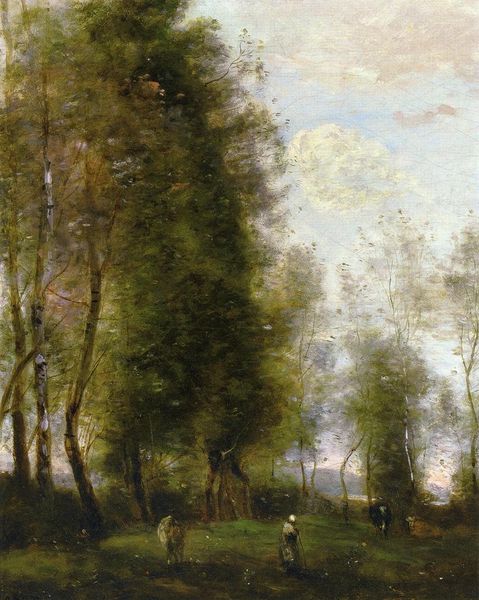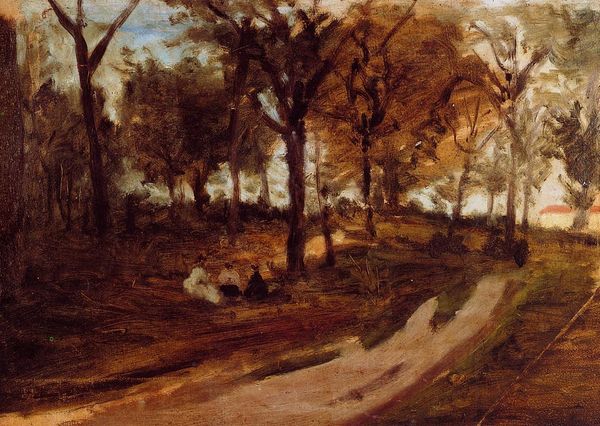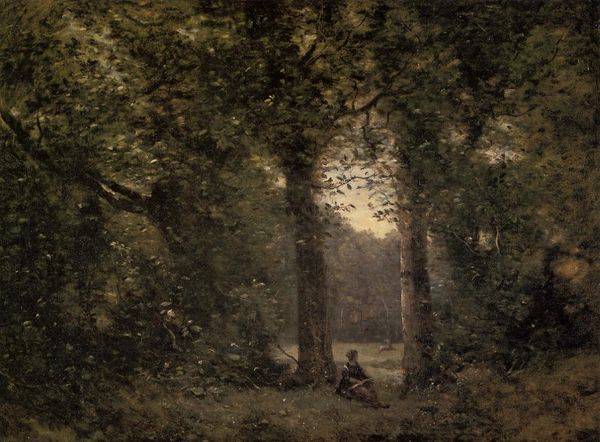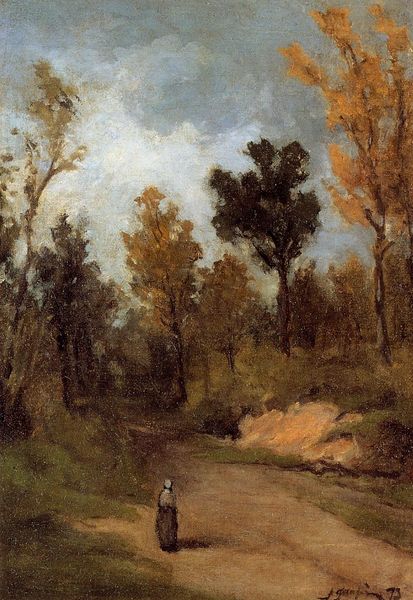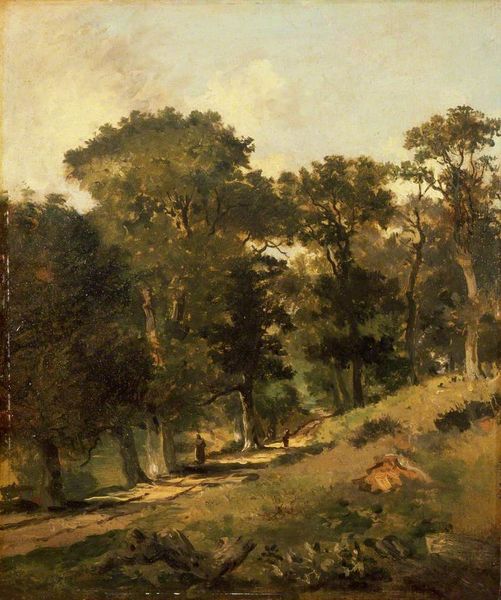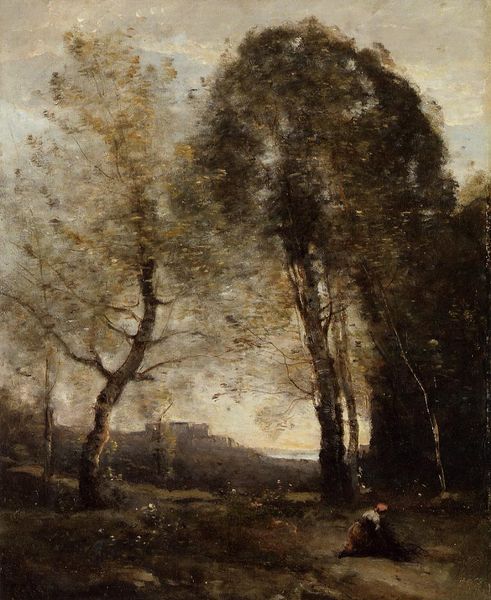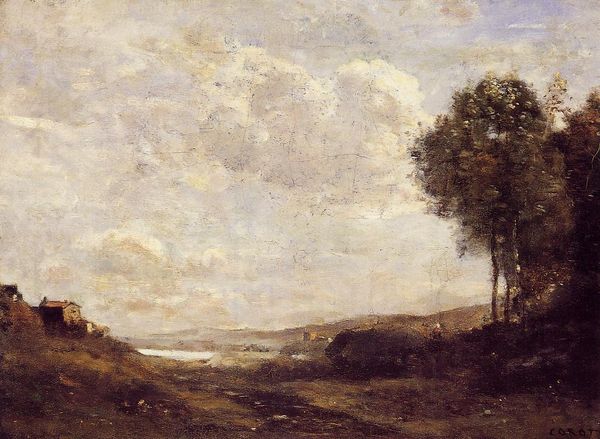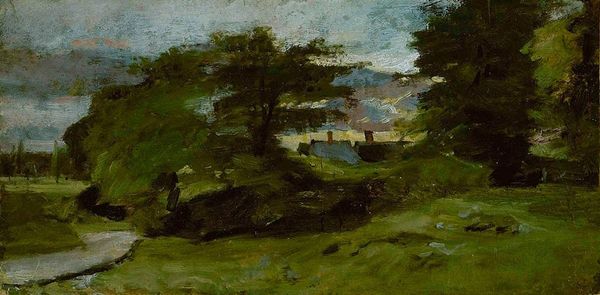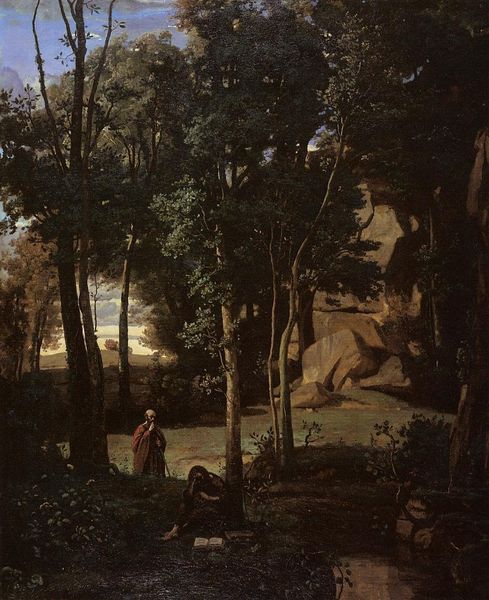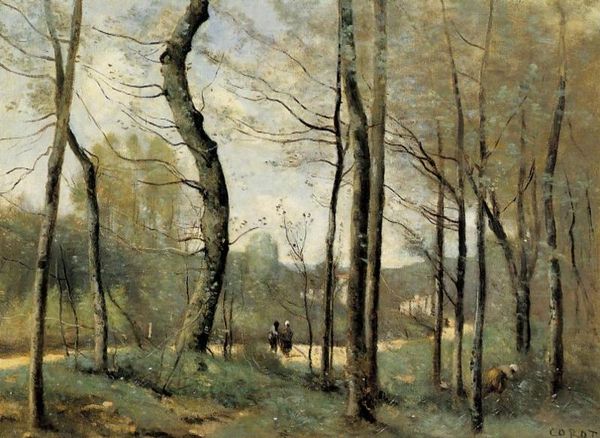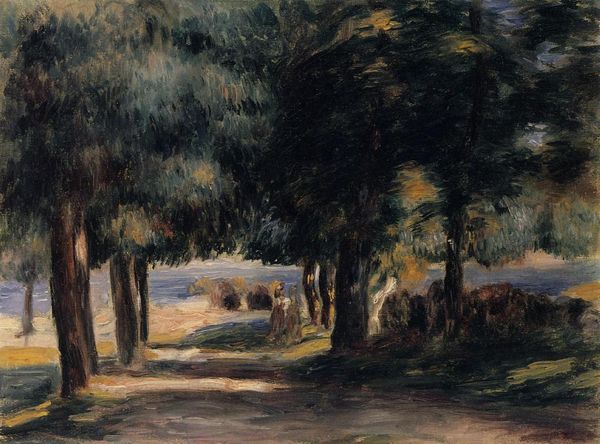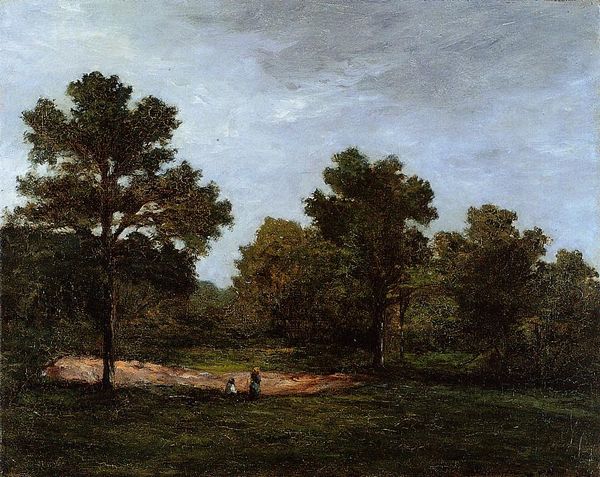
painting, plein-air, oil-paint
#
tree
#
painting
#
countryside
#
impressionism
#
plein-air
#
oil-paint
#
landscape
#
rural
#
figuration
#
nature
#
road
#
forest
#
figure in landscape
#
natural-landscape
Dimensions: 24 x 34 cm
Copyright: Public domain
Editor: Here we have Paul Gauguin's "In the Forest Saint Cloud II," created in 1873 using oil paint. I'm really drawn to how Gauguin captured the light filtering through the trees, almost making the forest seem like a sanctuary. What stands out to you most about this piece? Curator: Well, placing it within its historical moment is crucial. In 1873, the Impressionist movement was gaining momentum, challenging the academic art establishment. Paintings like this, created en plein air, were a direct response to that shift, capturing the fleeting effects of light and atmosphere, but also subtly declaring a move away from studio-bound art production. Did exhibiting 'real life', however, challenge the conventions about class and leisure in painting at the time? Editor: That's a really interesting point. I hadn’t thought about how plein air painting itself was a statement. So, by choosing to depict leisure in a public space, was Gauguin also commenting on the social accessibility of nature? Curator: Precisely! These scenes of bourgeois leisure were increasingly visible and became a site where societal norms and expectations could be explored and, at times, challenged, artistically. This wasn't just about painting pretty pictures; it reflected and subtly influenced the socio-cultural values of the era, don't you think? What did this scene signify about French society's values or anxieties at this point in time? Editor: That makes so much sense! The seemingly simple scene gains depth when viewed as a reflection of broader societal shifts and artistic revolutions. I guess I'll have to think differently next time about what looks to me a familiar scene in nature! Curator: Exactly! Every brushstroke, every compositional choice is embedded within its cultural context. And thinking about it this way reveals that art has a role in shaping as much as documenting society, offering invaluable insights into our past and present values.
Comments
No comments
Be the first to comment and join the conversation on the ultimate creative platform.
